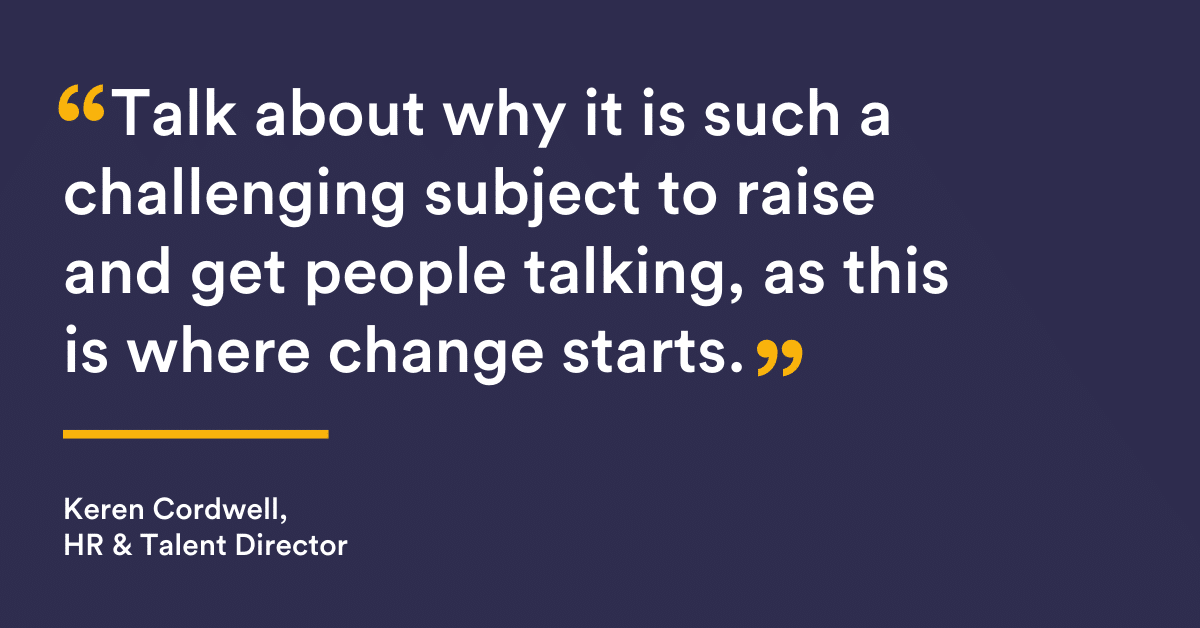How to Support Your Employees Through the Menopause
The menopause is under-discussed and often thought of as a taboo subject, and yet it’s something major, which affects most women in the workplace. In fact, ‘menopausal women are the fastest growing workforce demographic’ according to Professor Jo Brewis, co-author of the Government Report on Menopause.
The impact of the menopause on women and in turn businesses is very real. Research from Bupa shows that one million women have left a job because of menopause symptoms, while those who stay on end up forced to take long term leave, with average being 32 weeks.
With women staying in work until later in life (the retirement age is now 68), and the menopause affecting women from anytime upward from 45 years of age – it’s fundamentally clear that organisations need to better support the women in their teams, in order to create a future-proofed workplace.
The menopause, of course, also affects other people who have a menstrual cycle including trans people and people with ‘variations of sex development’ (VSD). It’s important that employers are aware of all of the people who might experience menopause symptoms and offer equal support.
Providing this improved support, while fostering a more inclusive workplace, will help you as a business to attract and retain valuable talent, in addition it will lead to increased engagement and loyalty, improved employee retention and fewer sick days. CIPD suggests: “Fostering an age- and gender-inclusive workplace will help you tap into the valuable skills and talent that men and women of all ages have to offer.”
How does the menopause affect women at work
Symptoms of the menopause vary from woman to woman; while one may experience no symptoms at all, one in four women will experience debilitating symptoms, according to research by Nuffield Health.
As well as the more commonly known about ‘hot flushes’, menopause can also cause havoc with a woman’s sleep, make headaches and migraines much worse, cause palpitations, muscle and joint pain, anxiety and brain fog. Imagine delivering a work presentation and finding all the words have suddenly fled your brain!
Working conditions don’t always support employees experiencing the menopause, as menopause in the workplace experts Henpicked says: “working environments like those with lack of temperature control, cramped conditions, some uniforms and stress can also make menopause symptoms worse’.”
What should employers do to help
Solent Mind, CMA’s charity partner for 2022, offers training sessions around the menopause and mental health at work. Donna Devlin, Workplace Wellbeing Trainer for Solent Mind, says: “It’s really important for employers to provide help for women who are experiencing menopausal symptoms, or may do in the future, because supporting and creating a positive, open environment may prevent those affected by the menopause from losing confidence in their skills and abilities or feeling like they need to hide the reasons for taking time away from the workplace.”
So how does this look in practice? HR & Talent Director Keren Cordwell has had many years of experience supporting employees over her career. She offers some suggestions on how employers can provide support for both their employees going through the menopause, as well as their loved ones, who will also be impacted.
1. Every journey is personal
Employers need to remember that every employee will experience the menopause differently and be open to this. Keren says: “It is real for every woman, so always ask as their employer how you can support – remember you don’t know what you don’t know, so always listen with an open mind.”
With this in mind: “It is important not to make assumptions about what will look like support” continues Keren. “And if you do, then make sure it covers a range of options such as physical, psychological and natural.”
This might include offering flexible working, facilitating more breaks, creating a break out area (if you don’t already have one) and providing fans.
2. Get people talking
The menopause shouldn’t be taboo – so opening conversations and raising awareness is an important step. Keren encourages: “Talk about why it is such a challenging subject to raise and get people talking, as this is where change starts.”
She also suggests finding a male ambassador or champion to talk about the menopause; “as the more men who take part in the conversation, the more it will be understood.”
3. Provide access to support
Whether it’s through your employee portals, internal comms or via posters and leaflets in your breakout areas; ensure your employees have plenty of access to support. Keren advises: “Signpost off to professional support for example occupational health, EAP and menopause charities.”
All of this ensures your team has the tools they need at their fingertips and makes accessing this support easy.
4. Provide training for managers
While managers don’t need to be experts or doctors, providing training will enable managers feel confident discussing the menopause and its effects with employees; whether they be directly affected or related to those who are going through it.
It will ensure they are clued up on how the law relates to menopause, and also how gender identity links to the menopause and why it’s important.
In turn, they will be able to help identify barriers and any adjustments that may need to be made for the employee.
Further reading and support:
CIPD The menopause at work: guidance for people professionals >
CIPD – The menopause at work: guidance for line managers >
ACAS – Menopause at work >
Henpicked – Menopause at work >
Solent Mind – Menopause and Mental Health >
NHS – Menopause >


